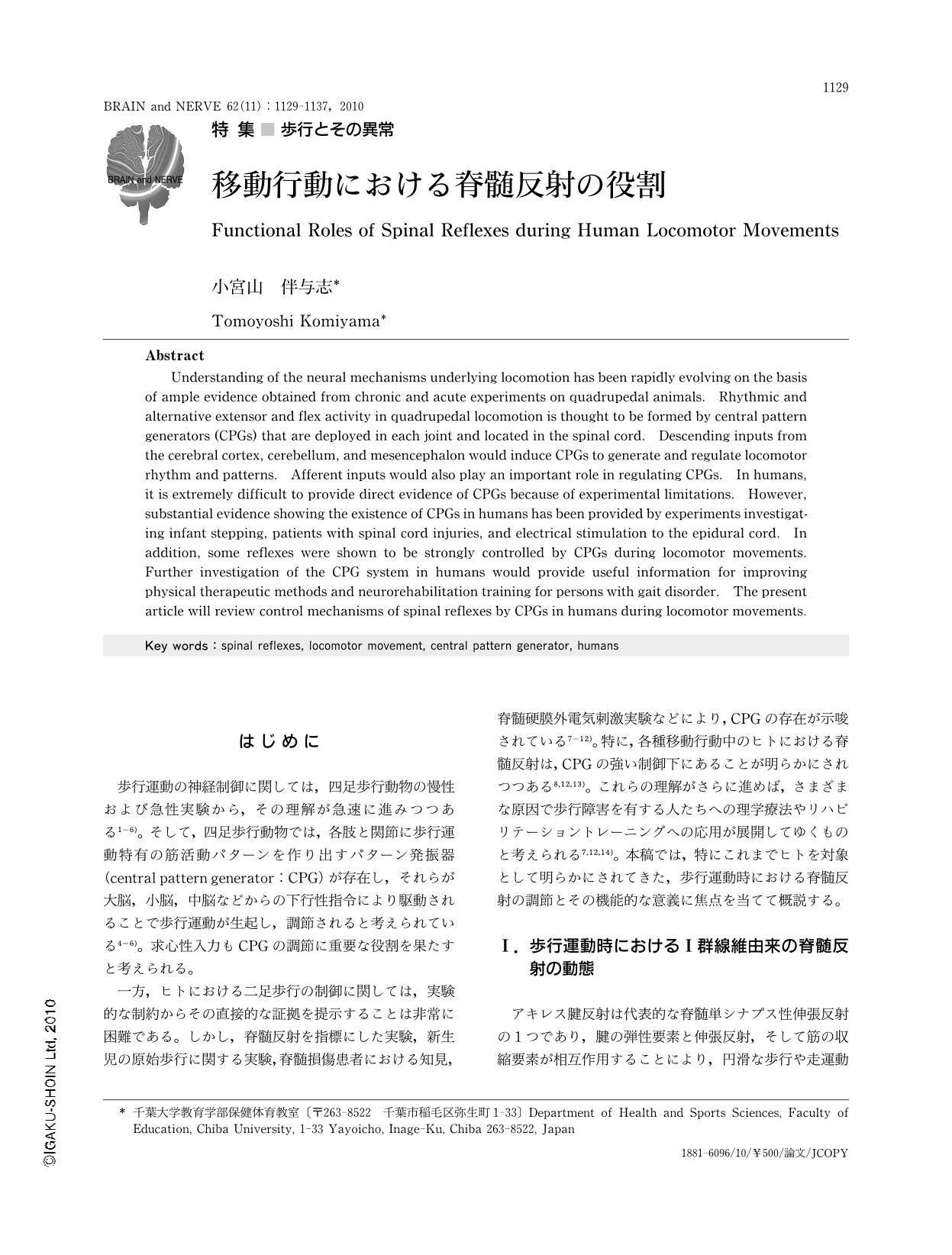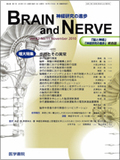Japanese
English
- 有料閲覧
- Abstract 文献概要
- 1ページ目 Look Inside
- 参考文献 Reference
はじめに
歩行運動の神経制御に関しては,四足歩行動物の慢性および急性実験から,その理解が急速に進みつつある1-6)。そして,四足歩行動物では,各肢と関節に歩行運動特有の筋活動パターンを作り出すパターン発振器(central pattern generator:CPG)が存在し,それらが大脳,小脳,中脳などからの下行性指令により駆動されることで歩行運動が生起し,調節されると考えられている4-6)。求心性入力もCPGの調節に重要な役割を果たすと考えられる。
一方,ヒトにおける二足歩行の制御に関しては,実験的な制約からその直接的な証拠を提示することは非常に困難である。しかし,脊髄反射を指標にした実験,新生児の原始歩行に関する実験,脊髄損傷患者における知見,脊髄硬膜外電気刺激実験などにより,CPGの存在が示唆されている7-12)。特に,各種移動行動中のヒトにおける脊髄反射は,CPGの強い制御下にあることが明らかにされつつある8,12,13)。これらの理解がさらに進めば,さまざまな原因で歩行障害を有する人たちへの理学療法やリハビリテーショントレーニングへの応用が展開してゆくものと考えられる7,12,14)。本稿では,特にこれまでヒトを対象として明らかにされてきた,歩行運動時における脊髄反射の調節とその機能的な意義に焦点を当てて概説する。
Abstract
Understanding of the neural mechanisms underlying locomotion has been rapidly evolving on the basis of ample evidence obtained from chronic and acute experiments on quadrupedal animals. Rhythmic and alternative extensor and flex activity in quadrupedal locomotion is thought to be formed by central pattern generators (CPGs) that are deployed in each joint and located in the spinal cord. Descending inputs from the cerebral cortex,cerebellum,and mesencephalon would induce CPGs to generate and regulate locomotor rhythm and patterns. Afferent inputs would also play an important role in regulating CPGs. In humans,it is extremely difficult to provide direct evidence of CPGs because of experimental limitations. However,substantial evidence showing the existence of CPGs in humans has been provided by experiments investigating infant stepping,patients with spinal cord injuries,and electrical stimulation to the epidural cord. In addition,some reflexes were shown to be strongly controlled by CPGs during locomotor movements. Further investigation of the CPG system in humans would provide useful information for improving physical therapeutic methods and neurorehabilitation training for persons with gait disorder. The present article will review control mechanisms of spinal reflexes by CPGs in humans during locomotor movements.

Copyright © 2010, Igaku-Shoin Ltd. All rights reserved.


